8 Popular Egyptian Dishes That Aren’t Actually Egyptian

Hend Salah
As unpredictable a country as Egypt is, if there’s one thing we know can say with absolute certainty is that Egyptians love to eat. When you think about it, there aren’t many countries that have as many ‘national dishes’ or culinary trademarks. But not all is as it seems – while there are certain foods that have come to define Egyptian cuisine, you might be surprised to hear that… *dramatic pause* …everything you thought you knew about food in this country is a LIE.
Well, that’s a little dramatic, but these eight essential Egyptian dishes aren’t Egyptian..
1- Vine Leaves/Mahshy

Let’s start with a nice easy one. It’s fairly common knowledge that vine leaves came to Egypt with the Ottoman Empire and that the dish belongs to Turkish cuisine, though it is more often stuffed with meat as opposed to rice. Using a blend of rice, parsley, tomato and cilantro, Egyptian cuisine came to make it a classic in the Egyptian kitchen.
2- Molokheya
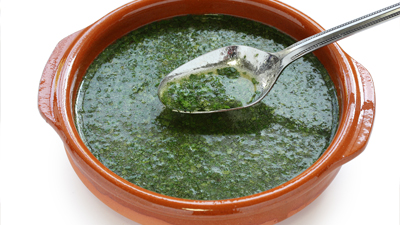
Legend has it that Molokheya was an ancient leaf which was believed to be poisonous back in the days of the ‘Hyksos’ and Fatimid Caliphates. Other stories suggest that it was considered to have healing properties as a plant and that it was only royals who ate it. Poisonous or healing, it doesn’t matter; because this dish continues to be an addiction to many.
3- Falafel (Ta'amiya)
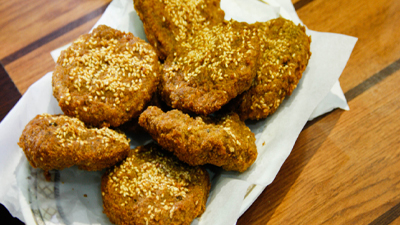
A staple of the typical Egyptian diet, this is one of the more debated and controversial ones. Many assume that it was the Levant countries that first gave life to that simple fried patty, while others suggest that it originated in Egypt as a meat-substitute during Lent for Egyptian Copts and only later found its way to Lebanon, Syria, et al – some even believe it to date back to the Pharonic era.
4- Koshary
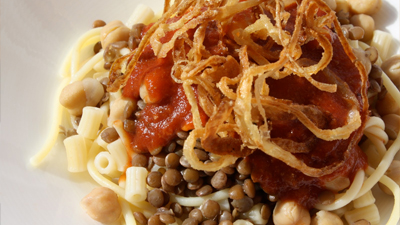
It’s been suggested that Koshary was first introduced to Egypt by the Indian troops who came to Egypt with the British army back in World War I as a breakfast item. Initially, it was made of just lentil and rice, mixed with margarine, though Italians living in Egypt at the time added pasta to the equation, before Egyptians spiked the mixture with the now traditional tomato sauce, da’a and crispy fried onions.
5- Dawood Pasha
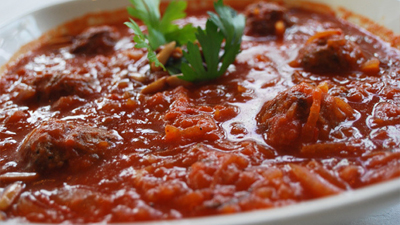
Although it has become a popular Egyptian dish, there’s no arguing that the meatballs-and-tomato-sauce was named after Turkish Sultan, Dawood Pasha. Stories suggest that the Sultan requested the dish from one of his chefs, who couldn’t perfect it and ended up being punished. Eventually, after much tweaking, it satisfied that Pasha and was subsequently named named after him.
6- Moussaka

Even though we grew to know it as a Greek dish, there are plenty of conflicting tales as to where the moussaka really came from. According to several theories, Egyptians first encountered the dish in the late 19th century; only historians disagree on whether the dish came from the Italians or the Greeks.
7- Baklava
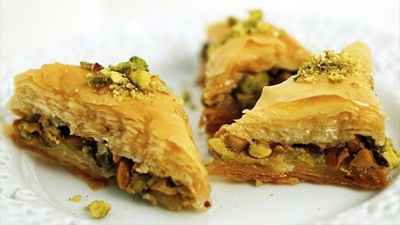
One of the few foods on this list to have not been changed or adapted in any essential way, this is another dish that is believed to have been born of the mind of a Turkish sultan, who named it after his wife, Baklava. Since then, the combination of filo pastry, nuts and syrup has been a classic dessert in Egypt.
8- Konafa
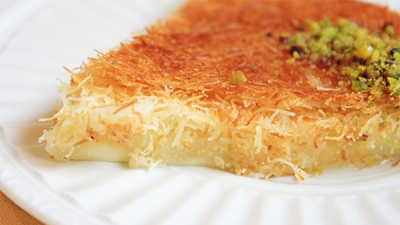
Although it’s near impossible to trace the history of konafa, what we do know is that it arrived in Egypt via the Islamic Umayyad Caliphate. It is thought to have been introduced by the founder of the Umayyad regime, Muawiya Ibn Abi Sufyan, as a perfect sohour dish during Ramadan for its ability to be act as an appetite-suppressant.
Is anyone else hungry?
recommended
 Restaurants
Restaurants
Cairo's Ramen Revival: 5 Must-Try Bowls Around the City
Asian Food Asian Restaurants Cafés
Cafés



